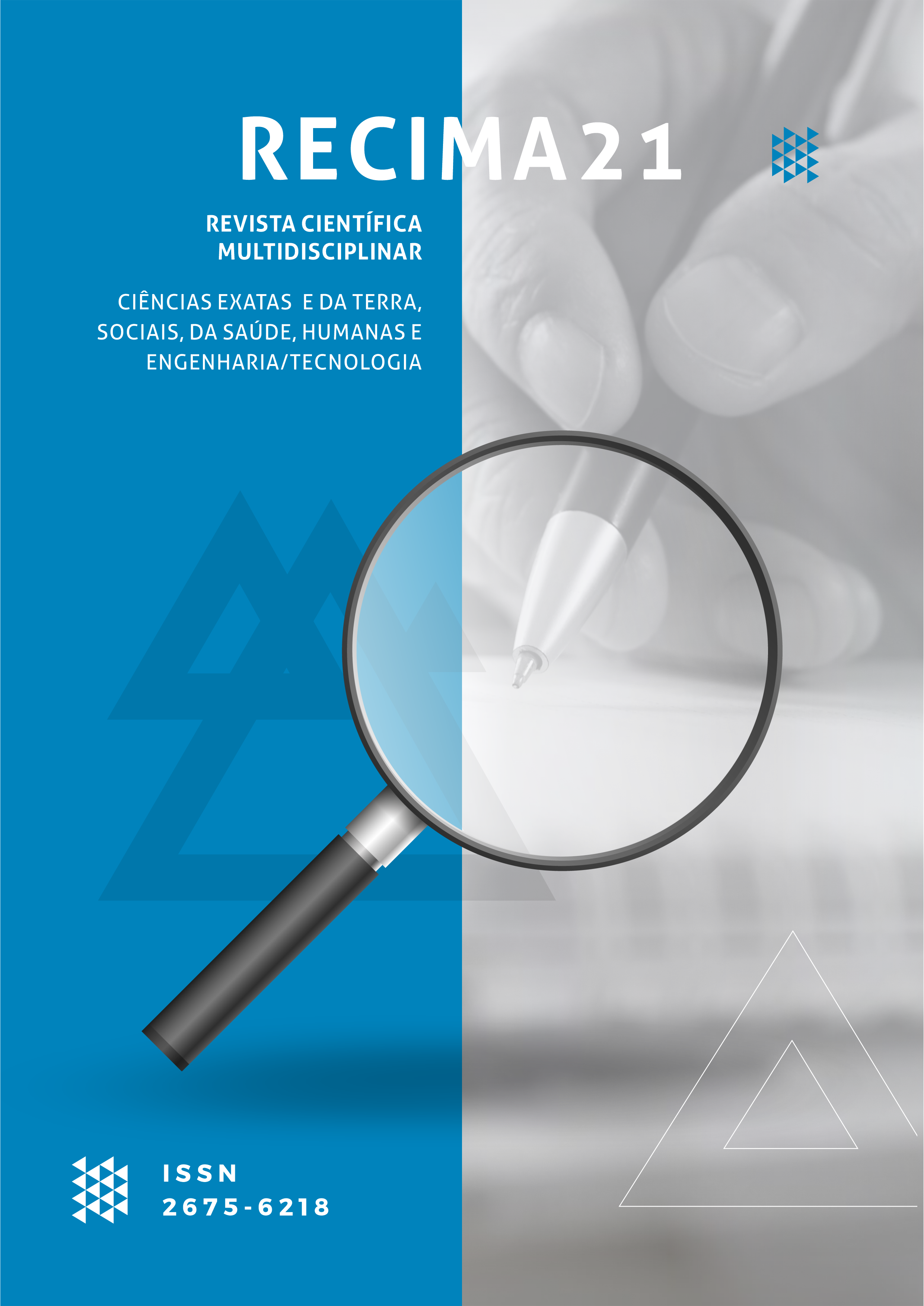UMA ABORDAGEM ESTATÍSITICA COMPARATIVA COM CRIANÇAS QUE PASSARAM E NÃO PASSARAM PELO PROGRAMA ESTADUAL DE RESISTÊNCIA ÀS DROGAS E À VIOLÊNCIA (PROERD) DE ESCOLAS DA REDE PÚBLICA DO MUNICÍPIO DE COLOMBO/PR - BRASIL
DOI:
https://doi.org/10.47820/recima21.v3i8.1782Palavras-chave:
riança, proerd, droga, crime, contravençãoResumo
O presente artigo tem como objetivo geral apresentar uma análise estatística comparativa entre crianças que passaram e não passaram pelo Programa Estadual de Resistência às Drogas e à Violência (PROERD), ambas de escolas públicas do município de Colombo/PR, região metropolitana de Curitiba/PR, e figuraram como autora(s) ou noticiada(s) de crime(s) ou contravenção(ões) penais registrados nos Boletins de Ocorrência Unificados (BOUs), da Polícia Militar do Estado do Paraná (PMPR) e da Polícia Civil do Paraná (PCPR). A motivação surgiu com base em uma pesquisa do Instituto Nacional de Justiça Norte Americano (U.S. Department of Justice) sobre o mesmo tema. Chegou-se a seguinte questão: os jovens que realizaram o PROERD, na cidade de Colombo/PR, incidiram menos em delitos do que aqueles que não passaram pelo programa? Como metodologia, utilizou-se o software Dashboard para identificar os vínculos existentes entre BOUs e crianças que passaram e não passaram pelo PROERD, possibilitando elaborar a análise proposta. Por fim, constatou-se que as crianças que passaram pelo PROERD figuraram, numericamente, como autoras ou noticiadas em mais BOUs do que as crianças que não passaram pelo programa, ou seja, os alunos que realizaram o PROERD cometeram mais delitos do que aqueles que não passaram pelo programa.
Downloads
Referências
ABRAMOVAY, Miriam; RUA, Maria das Graças. Violência nas escolas. Brasília, DF: Ed.Unesco, 2002.
AMERICAN PSYCHOLOGICAL ASSOCIATION. Project DARE: No effects at 10-year follow-up. Disponível em: < https://psycnet.apa.org/record/1999-03346-017>. Acesso em: 21 de jul. de 2022.
ESCOLA MUNICIPAL JOHN KENNEDY. Relação de alunos matriculados no 5º ano, dos anos de 2014 a 2017.
ESCOLA MUNICIPAL ARLINDO ANDRETTA. Relação de alunos matriculados no 5º ano, dos anos de 2014 a 2017.
HISTÓRICO DO PROERD. Disponível em: <http://proerdbrasil.com.br/oproerd/oprograma.htm>. Acesso em: 21 de jul. de 2022.
MINISTÉRIO DA JUSTIÇA. VI Levantamento nacional sobre o consumo de drogas psicotrópicas entre estudantes do ensino fundamental e médio da rede pública de ensino nas 27 capitais brasileiras. Brasília, DF: Departamento de Psicologia da Escola Paulista de Medicina e Secretaria Nacional Antidrogas, 2010.
PEROVANO, Dalton G. Concepções dos instrutores do Programa Educacional de Resistência às Drogas e à Violência sobre a sua formação. Dissertação de Mestrado. Universidade Federal do Paraná. Curitiba, 2006.
SCHENKER, M.; MINAYO, M. C. S. (2005). Fatores de risco e de proteção para o uso de drogas na adolescência. Ciência e Saúde Coletiva, 10(3), 707-717.
SOUZA FILHO, Roberto Pereira. A percepção da comunidade escolar sobre o Programa Educacional de Resistências as Drogas e Violência, PROERD na Escola Estadual Manoel Vitorino em Salvador. Dissertação (Mestrado em Políticas sociais e cidadania) Universidade Católica do Salvador. Bahia, 2008.
USP, Universidade de São Paulo. Adolescentes têm seu primeiro contato com bebida aos 13 anos. Disponível em: <https://www5.usp.br/noticias/saude-2/adolescentes-tem-seu-primeiro-contato-com-bebida-aos-13-anos/>. Acesso em: 21 de jul. de 2022.
U.S. DEPARTMENT OF JUSTICE. Past and Future Directions of the D.A.R.E Program: An Evaluation Review. Disponível em: <https://www.ncjrs.gov/pdffiles1/Digitization/152055NCJRS.pdf>. Acesso em: 21 de jul. de 2022.
LANDMARKRECOVERY. Why the DARE Program Failed. Disponível em: <https://landmarkrecovery.com/why-the-dare-program-failed/>. Acesso em: 21 de jul. de 2022.
ZANELLA, L. Metodologia de Estudo e de Pesquisa em Administração. Brasília: CAPES, 2009.
Downloads
Publicado
Edição
Seção
Categorias
Licença
Copyright (c) 2022 RECIMA21 - Revista Científica Multidisciplinar - ISSN 2675-6218

Este trabalho está licenciado sob uma licença Creative Commons Attribution 4.0 International License.
Os direitos autorais dos artigos/resenhas/TCCs publicados pertecem à revista RECIMA21, e seguem o padrão Creative Commons (CC BY 4.0), permitindo a cópia ou reprodução, desde que cite a fonte e respeite os direitos dos autores e contenham menção aos mesmos nos créditos. Toda e qualquer obra publicada na revista, seu conteúdo é de responsabilidade dos autores, cabendo a RECIMA21 apenas ser o veículo de divulgação, seguindo os padrões nacionais e internacionais de publicação.













